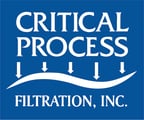Premature fouling is caused by an excess of particles in the fluid that clogs a filter earlier than its expected life cycle.
Typically the problem will appear every time the fluid passes through the employed filter and sometimes it happens intermittently, which can sometimes be more challenging to find the root cause. Fouling increases processing time as it slows fluid flow through the filter. It requires additional filter changeouts that stop processes and increase costs. There’s also the potential for product loss. Overall, premature fouling will reduce process efficiency. This post discusses how CPF partnered with a customer to address a situation with inconsistent premature fouling. The customer’s process team was convinced there was an issue with the filter, but as you will see, good sleuthing and teamwork rooted out the culprit, and all systems returned to normal.
The Situation
A solid dose pharmaceuticals manufacturer had an elevated temperature process using solvents. The filters in the process were Critical Process Filtration's PTM membrane filters in a single housing on a transfer line between an elevated temperature reaction vessel and downstream processes. The filters were replaced after each batch according to standard operating procedure. The filters would become completely fouled at the beginning of new production shifts at infrequent, random intervals.
Customer Internal Evaluation
The customer’s process engineers, production, and quality staff determined, based on their process measurements, that no process changes were made that might cause the PTM membrane filters to foul. Process parameter measurements were within specifications at all times. The customer’s staff believed that inconsistencies in filter construction and performance were the likely cause of the fouling.
Technical Services Team Initial Investigation
The CPF team was asked to investigate the inconsistent performance of the filters. The first step was to look at our internal records documenting the quality of the filters during production. They found:
- All filters sold to the customer were “Pharmaceutical” grade filters
- The membrane used in all production batches was within the strict specifications for Pharmaceutical grade PTFE membrane filters
- Integrity tests performed as part of filter production were all within the specifications
The Technical Services Team concluded that the filters were consistent in construction and performance. The filters were fouling because some other factor had changed and was not being seen by the customer’s staff or our team.
Joint Process Review
The Technical Services Team met to do a step-by-step review of the events leading up to each fouled filter occurrence. As in all process reviews, a series of questions were asked and answered. They were:
- When were the filters replaced? Between batches, as normally done.
- Any change in filtration goals? – None, capture undissolved particles
- Any change in the chemical composition of the fluid or expected contaminants? No. The same in all batches and within specifications (no effect on the membrane)
- Any change in batch size, process conditions, product acceptance criteria, cleaning, or sanitization? No. All were within the specifications
With no obvious cause for the filter fouling evident, the only remaining avenue of investigation was direct observation of the process inside the facility.
Direct Process Observation
The Technical Services Team and customer staff observed batch processing inside the facility, including watching the way the process was managed and how and where parameters were monitored.
Multiple batches were processed without incident. Then, immediately after a shift change during a batch, the filters fouled and would not allow flow.
Fouled Filter Testing and Incident Investigation
The filters were immediately replaced and the fouled filters were brought to an on-site laboratory for analysis where testing showed that the filters were fouled with crystals of the product instead of contaminants.
The customer staff stated that product crystals would not form unless the liquid temperature dropped below a specified limit.
Process measurements showed that the temperature in the reaction vessel was always above the limit. However, the temperature in the transfer line and filter housing was not monitored.
Further investigation found:
- The reaction vessel was temperature controlled and insulated.
- The transfer piping and filter housing was not temperature controlled or insulated.
- Under normal operating conditions, the liquid flowed through the transfer line and filter housing quickly and the temperature did not fall below the temperature limit.
- If the process flow was stopped for an extended shift change or due to an upset elsewhere in the process, the temperature could fall below the limit and allow crystal formation.
A review of operating records showed that the flow through the transfer pipe was stopped for extended periods before each filter fouling incident.
Solution Implementation
The Customer chose to install temperature control and monitoring equipment on the transfer line and to insulate the piping. There has been no further filter fouling events on that transfer line.
The Critical Process Filtration Technical Services Team partners with companies to perform process evaluations, troubleshooting analysis, filter process development tests, and application consulting. In some cases, like this one, a change in filters or filtration processes wasn’t needed. Instead, calling us in to have a fresh perspective on a vexing challenge resulted in a simple solution. Learn more about Critical Process Technical Services.
